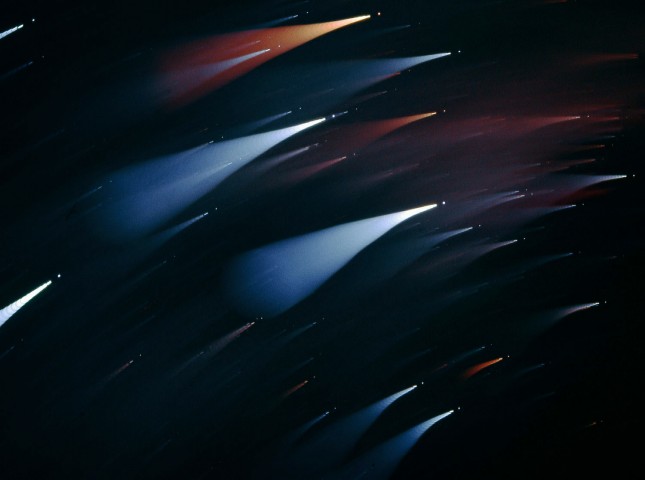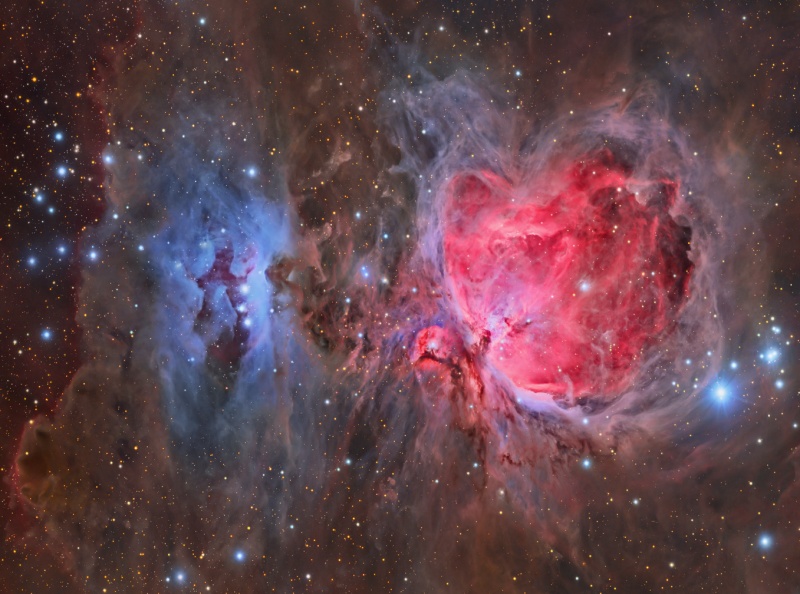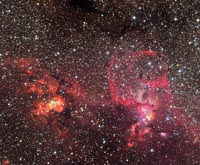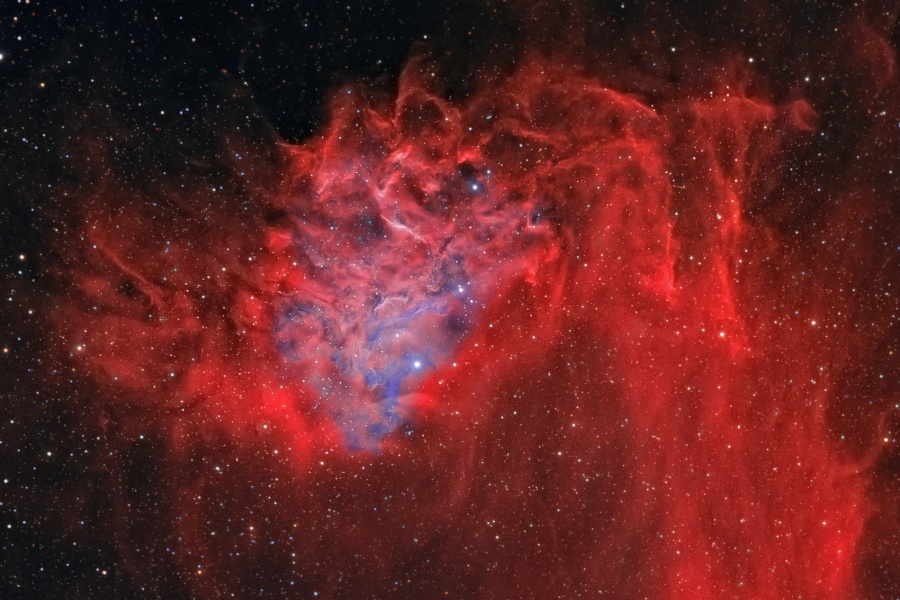In principle, finding out the color of (bright) stars is relatively straightforward. Get yourself a not too small telescope and a good eyepiece. Locate a bright star. Magnify it. Magnify it some more. Put the star slightly out of focus. Observe.
There are a few problems here, certainly. You are not going to see the color of the star in the same way as you would if you could magnify its light much, much more than any telescope can do for you and project its light onto a white paper, then observe the color of the projected light in broad daylight. The fact is that our eyes don't work in the same way when illumination is faint as they do under daylight conditions. Also, all stars that we see from below the Earth's atmosphere are reddened by the atmosphere, and also affected by the atmosphere in other ways. It is not easy to judge the color of Sirius, for example, when that star is twinkling so madly!
In principle, however, and with this in mind, you really can get a moderately good idea of the colors of the stars by observing them with a not too small telescope and "spreading out the light" of the stars you observe by putting them out of focus. Combining many images of bright stars where the stars are increasingly out of focus is a technique that astrophotographers have used to bring out the colors of stars:
This is an image of the Southern Cross, where the stars are more and more out of focus. You can find the small bright and seemingly rather colorless points of light of the five principal stars of the Southern Cross; they can be found in the "upper right quadrant" of the image. The stars are then more and more out of focus, creating broader and broader "light cones" sloping down to the left. These light cones are also increasingly strongly colored. Most are blue, but some are reddish-orange. Credit: Stefan Seip.
The Southern Cross can only be seen at southern latitudes, but famous Orion can be seen all over the world. Orion has been imaged with a similar step-focus technique. Here you can see Orion's Belt and Orion's Sword as brightly colored light cones:
Here almost all the stars are blue, but the flamboyantly pink light trail of the Orion Nebula calls attention to itself. Credit: Copyright © 2005 Joe Orman
The pinkness of the Orion Nebula is elegantly brought out by Tony Hallas in this image (the blue Running Man Nebula with embedded blue stars is on the left of it, and bright blue star Iota Orionis is on the right of of it):
For people on the northern hemisphere, the Orion Nebula is the brightest nebula in the sky, and to us it is the prototypical star forming nebula in the sky. Its pink color is the signature of ionized hydrogen. Hydrogen can become ionized for different reasons, but we often think of it as the telltale sign of star formation. In other galaxies, pink knots signify the presence of hot young stars whose intense ultraviolet light ionizes the surrounding hydrogen and makes it glow:
This image of nearby galaxy M33 has been processed to reveal an incredible number of emission nebulae. Credit and copyright: Chris Schur.
What is ionized hydrogen in the first place, and why is it pink? Basically, a hydrogen atom becomes ionized when it is hit by a photon of ultraviolet light, which knocks the electron of the hydrogen atom into "a higher orbit". This new, higher orbit always corresponds to an extra helping of energy. There are several different higher "levels" that the electron can be kicked into, but most of the time it will just move "one floor up", "from the ground floor to the first floor", so to speak. But the energized electron has to "fall down into its ground state" again, and when it does so, it has to radiate away its excess energy. It does so by emitting a photon whose energy, wavelength and color correspond exactly to what "level" the electron was "kicked into".
This image shows both the Balmer series, the Lyman series and the Paschen series, but it is the Balmer series that is of interest to us. (That is because the Lyman series and the Paschen series don't cause emission in the visual part of the spectrum.) The illustration shows the first four "steps" of the Balmer series. The first step, when the electron gets kicked "only one floor up", gives the electron an extra energy package corresponding to a photon with the wavelength of 656 nm. The second step, when the electron gets kicked "two floors up", corresponds to the extra energy of a photon with the wavelength of 486 nm. These two steps in the Balmer series are called hydrogen alpha and hydrogen beta, and they are, for all intents and purposes, the only two steps that we need to worry about when it comes to the color of emission nebulae.
The visible spectrum of hydrogen. Note the strong red color of hydrogen alpha at 656 nm and the aqua-blue color of hydrogen beta. The pink color of emission nebula is basically a combination of these two wavelengths. Usually there is a lot more hydrogen alpha than hydrogen beta light in an emission nebula, which is why the nebula looks pink and not bluish. Credit: Balmer series article at Wikipedia.
But wait a minute. Is it really true that emission nebulae are pink? It sounds like a silly question. But it is not so silly when we consider that it is impossible for human beings to see pink color in any emission nebulae out there! Think of the Orion nebula, which looked so brilliantly pink in Tony Hallas' ccolor image. If you observe the Orion nebula through a telescope, even a moderately large telescope, you will still not see more color than, at best, this:
The picture can be found here: http://homepage.mac.com/andjames/Page204.htm
Why does the Orion Nebula look greenish to our eyes? It has to do with the color response of our eyes. 656nm, the color of hydrogen alpha, is deep in the red part of the visible spectrum for us humans. We can see this color well enough in daylight, but when illumination is faint, as it always is when we talk about the light emitted by a nebula, we simply can't detect it at all. Try as you might, you will never see pink color in an emission nebula.
So where does the green light come from? We just might be able to detect a bit of hydrogen beta, because our eyes are definitely more sensitive to 486 than to 656 nm. On the other hand, faint light of 486 nm is rather too blue for us to see it as colored, because we are rather bad at detecting blue color in faint light sources, too. We are definitely much better at detecting faint green light. And there is light in the Orion Nebula which is greener than hydrogen beta and also brighter, and that is doubly ionized oxygen, OIII. The primary wavelength of OIII is 501 nm, and the secondary wavelength of OII is 496 nm, both greener than hydrogen beta. This Celestron OIII filter gives you an idea of the color of doubly ionized oxygen:
But isn't the visual color of the Orion Nebula much more yellow-green than this? Yes, and that is because we are so bad at detecting blue color when illumination is faint. Under such conditions we will always be much better at detecting yellow-green color than anything else, so we will "interprete" the blue-green color of doubly ionized oxygen as a greenish or even yellow-green shade of gray.
Doubly ionized oxygen light is found near very hot stars in the sort of extremely rarified gas that is a much better vacuum than anything we can make here on Earth. It is certainly found in the Orion nebula. This is an image by c_richard_francis of the Orion Nebula in the Hubble palette, where blue corresponds to light from doubly ionized oxygen:
You can see that there is a lot of doubly ionized oxygen in the center of the Orion Nebula, mapped as blue in this image. (Read more about the image here: http://www.flickr.com/photos/57889116@N04/5535957942/)
I'd say that it is this doubly ionized oxygen that our eyes may see as green color in the Orion Nebula.
Finally, the light from emission nebulae can be reddened by dust, lika all other kinds of light in the universe. A somewhat dramatic example of an apparently unreddened and an obviously reddened emission nebula which seem to be joined to each other is NGC 3576 and NGC 3603:
NGC 3603 on the left, and NGC 3576 on the right. While they seem to be very close together, these two nebula actually belong to different spiral arms, and NGC 3306 is much deeper in the dust of the Milky Way than NGC 3576. Therefore NGC 3603 has lost most of its bluish hydrogen beta light due to dust reddening, while most of the hydrogen beta from much closer NGC 3576 actually reaches us. Credit: Stefan Binnewies, Josef Pöpsel.
NGC 3603 is much more energetic and contains many more extremely hot and bright stars than NGC 3576. If you follow this link, http://members.pcug.org.au/~stevec/ngc3 ... otated.jpg, you will see an image of NGC 3603 and 3576 in the Hubble palette. Bear in mind that blue color corresponds to very high levels of ionization and doubly ionized oxygen, and you can see how much more blue light is there in NGC 3603 than in NGC 3576. (You can read about the image here: http://members.pcug.org.au/~stevec/ngc3 ... 11K_RC.htm)
As for nebulae imaged in the Hubble palette, they are usually a combination of narrowband OIII, hydrogen alpha and SII (singly ionized sulphur) images. Normally the OIII emission is mapped as blue, hydrogen alpha as green and SII as red in the Hubble palette images. You can see where in the spectrum these wavelengths are in this illustration from the National Astronomical Observatory of Japan and the European Southern Observatory:
Note that the SII emission line is extremely close to the hydrogen alpha line, immediately to the right of it. These two emission lines are basically the same visual color of deep red, but they correspond to different levels of ionization and are mapped as different colors in Hubble palette images.
Finally, is it at all true to say that emission nebulae are pink? If so, by what criterion are they pink?
Yes, they are pink because they will always look pink in well-done RGB photos. It is possible that they would also look pink if we could create a strong source of light made up of pure 656 nm light, and mix it with a smaller amount of bright 486 nm light. Then, if the mixture of 656 nm light and 486 nm light was bright enough, we could observe it in broad daylight. And then we might very well see that it was pink.
Ann
The color of emission nebulae
The color of emission nebulae
Color Commentator
Re: The color of emission nebulae
Let's return to emission nebulae and the Hubble palette. Usually the Hubble palette nebulae are imaged in OIII, Ha and SII light. OIII represents the highest level of ionization and is often found closest to the hot ionizing source. Ha is an intermediate level of ionization, and SII represents the lowest level of ionization. Therefore, ionized sulphur is often found farther away than hydrogen alpha from the ionizing source.
But in visual light, Ha and SII are almost exactly the same shade of red. By imaging an emission nebula in both Ha light and SII light and showing them both as red, you can make the emission nebula appear larger.
Why doesn't SII show up all that well in ordinary RGB imagery? If this spectrum of the Virgo intracluster medium is at all typical of the relative strength of Ha emission and SII emission in emission nebulae, then the answer would be that Ha emssion is so much brighter and stronger than SII emission. There is, quite simply, just so much more Ha than SII light:
Credit: NAOJ.
But, as I said, you really can photograph a nebula in SII as well as in Ha light, to make it look bigger. And since these two emission lines, although they represent two quite different levels of ionization, are nevertheless almost exactly the same red color, you really can show them as the same red color in your image. Rolf Geissinger, however, didn't map his Ha light exposure of the Flaming star Nebula as the same color as his SII light exposure of this nebula, but showed them as two different shades of red. His image is certainly stunning:
However, his image looks even better in this very large version, which is so large that I can only post it as a link:
http://www.stern-fan.de/Seiten/galerie_ ... gstar.html
Here you can also read about the filters he used and what exposures he made to create this image. Most interesting.
Ann
But in visual light, Ha and SII are almost exactly the same shade of red. By imaging an emission nebula in both Ha light and SII light and showing them both as red, you can make the emission nebula appear larger.
Why doesn't SII show up all that well in ordinary RGB imagery? If this spectrum of the Virgo intracluster medium is at all typical of the relative strength of Ha emission and SII emission in emission nebulae, then the answer would be that Ha emssion is so much brighter and stronger than SII emission. There is, quite simply, just so much more Ha than SII light:
Credit: NAOJ.
But, as I said, you really can photograph a nebula in SII as well as in Ha light, to make it look bigger. And since these two emission lines, although they represent two quite different levels of ionization, are nevertheless almost exactly the same red color, you really can show them as the same red color in your image. Rolf Geissinger, however, didn't map his Ha light exposure of the Flaming star Nebula as the same color as his SII light exposure of this nebula, but showed them as two different shades of red. His image is certainly stunning:
However, his image looks even better in this very large version, which is so large that I can only post it as a link:
http://www.stern-fan.de/Seiten/galerie_ ... gstar.html
Here you can also read about the filters he used and what exposures he made to create this image. Most interesting.
Ann
Color Commentator











